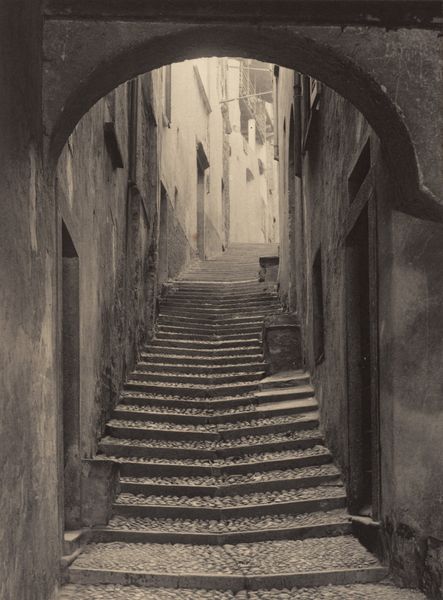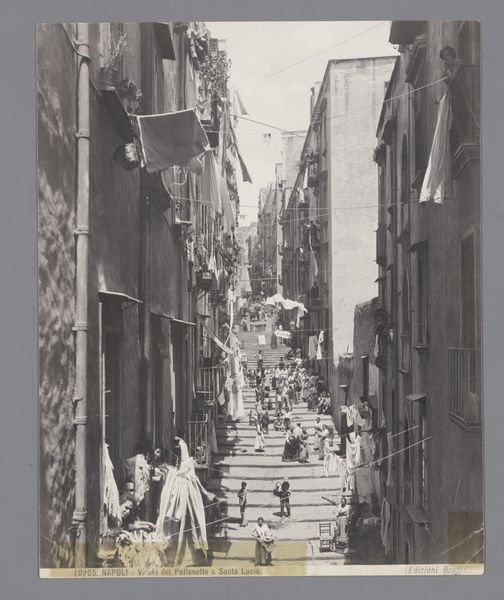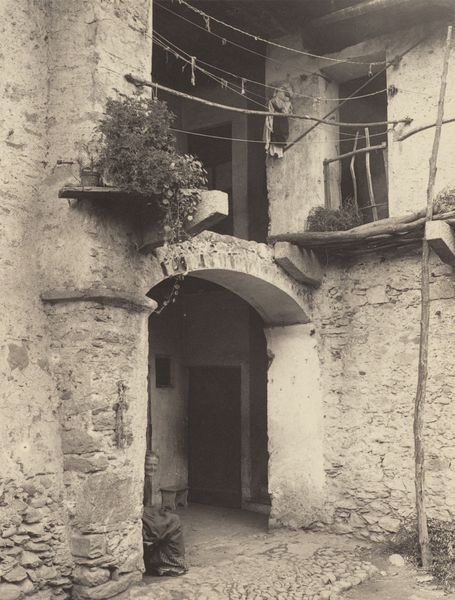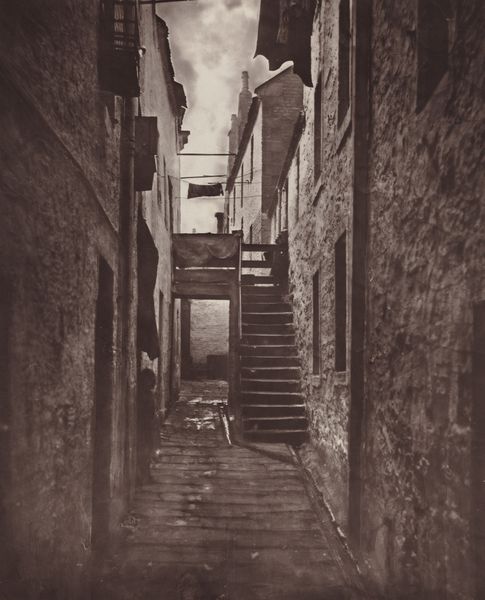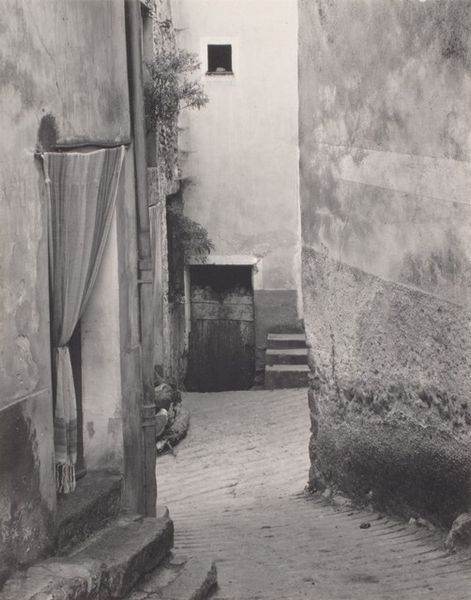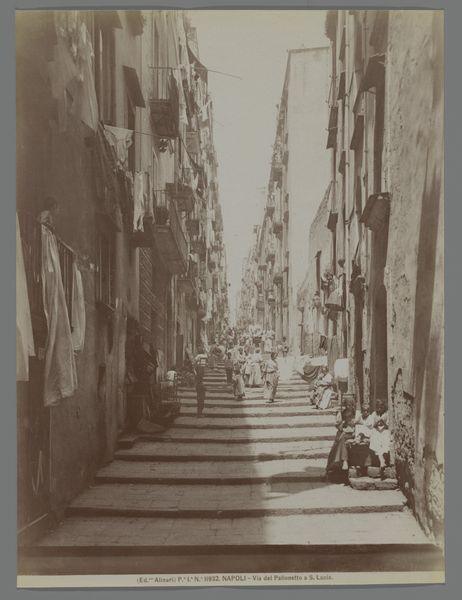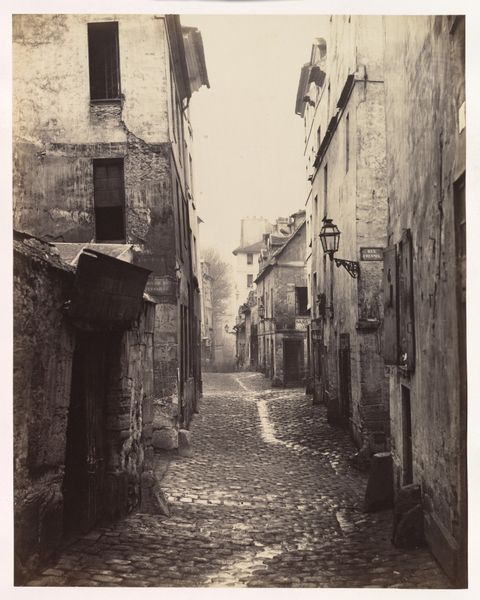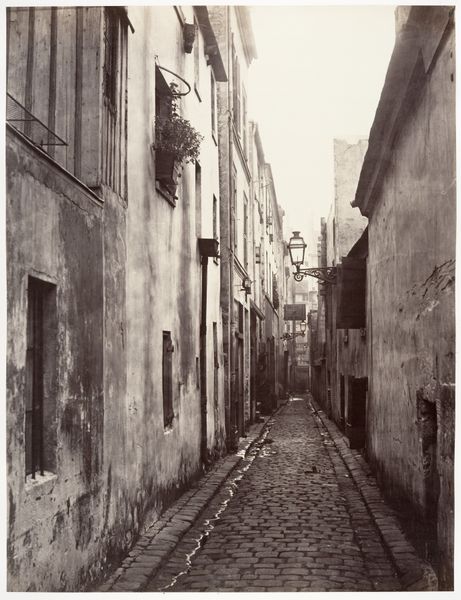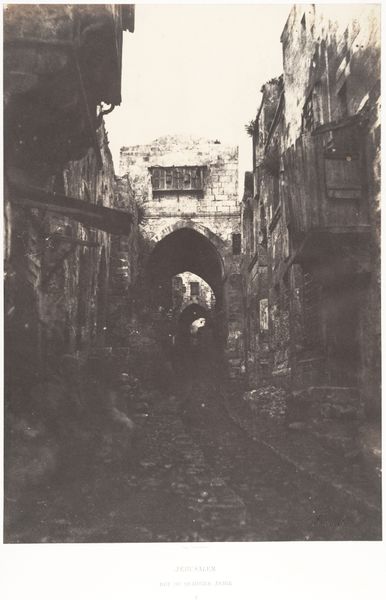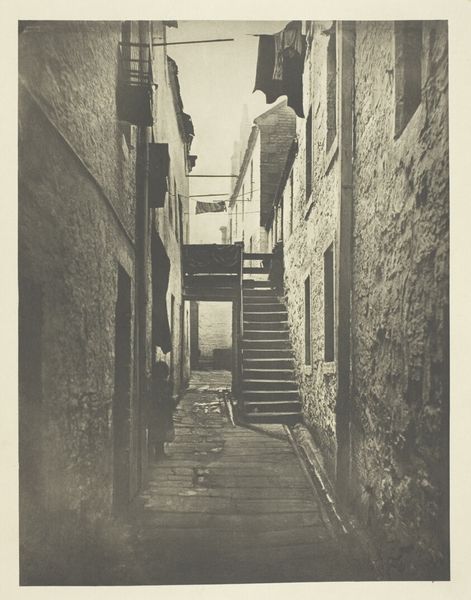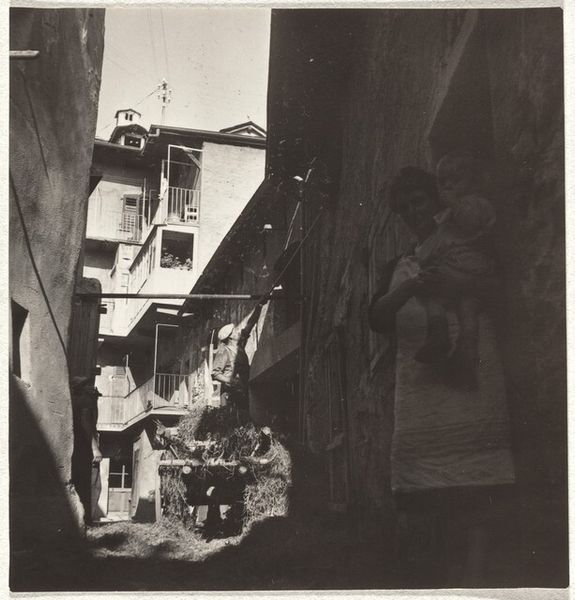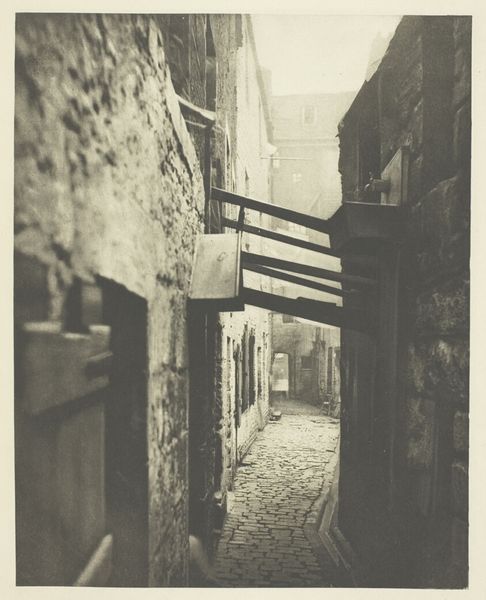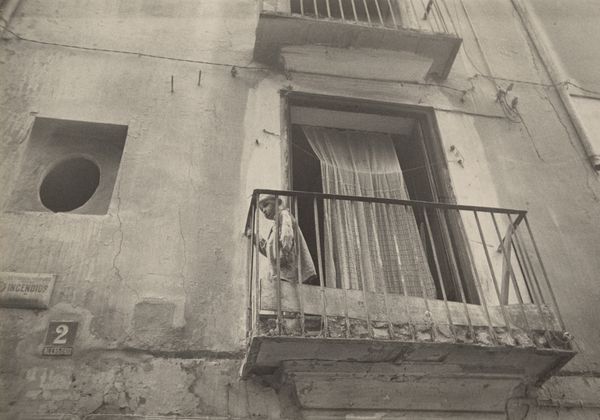
photography, gelatin-silver-print
#
impressionism
#
landscape
#
photography
#
gelatin-silver-print
#
19th century
#
cityscape
Dimensions: sheet (trimmed to image): 22.2 x 16.6 cm (8 3/4 x 6 9/16 in.) mount: 24.9 x 19.4 cm (9 13/16 x 7 5/8 in.) mat: 49.6 x 32.9 cm (19 1/2 x 12 15/16 in.)
Copyright: National Gallery of Art: CC0 1.0
Curator: This gelatin-silver print, "Via Fiori, Bellagio," taken by Alfred Stieglitz in 1887, offers such a layered view of 19th-century Italy. Editor: Yes, it feels very intimate. It depicts a narrow, stepped street in Bellagio, with a woman selling goods on the side. I’m curious about its narrative. What's your take on it? Curator: Well, it makes me consider the representation of labor and everyday life, particularly of women, within the artistic landscape of the time. Notice how Stieglitz positions the vendor in this seemingly picturesque scene. What does it say about whose stories get told, and from what perspective? Editor: That’s interesting, I hadn’t thought of it that way. I just saw a nice, quaint scene. So, are you saying he's subtly commenting on class or social structures? Curator: Perhaps, or at least reflecting them. This photo, with its soft focus typical of Impressionism, also romanticizes a potentially very difficult existence. We need to ask ourselves: does Stieglitz truly see this woman, or is she merely part of the scenery, an exotic element for the consumption of the art-viewing public? Think about who could afford to travel to Italy in the 1880s and who was more likely to live and work there. Editor: So, by framing it within the social context, we can unpack hidden meanings and power dynamics? Curator: Exactly. And also to consider that this 'snapshot' is a product of deliberate framing by Stieglitz. He chose to capture this particular moment and angle for an intended audience. Understanding those choices gives us greater insight. Editor: That is quite the way to consider photographic composition beyond its immediate aesthetic appeal! I appreciate understanding his choices in framing a potentially biased representation of society. Curator: Absolutely! Art encourages us to engage in thoughtful dialogue about historical context and our perception of the world.
Comments
No comments
Be the first to comment and join the conversation on the ultimate creative platform.
